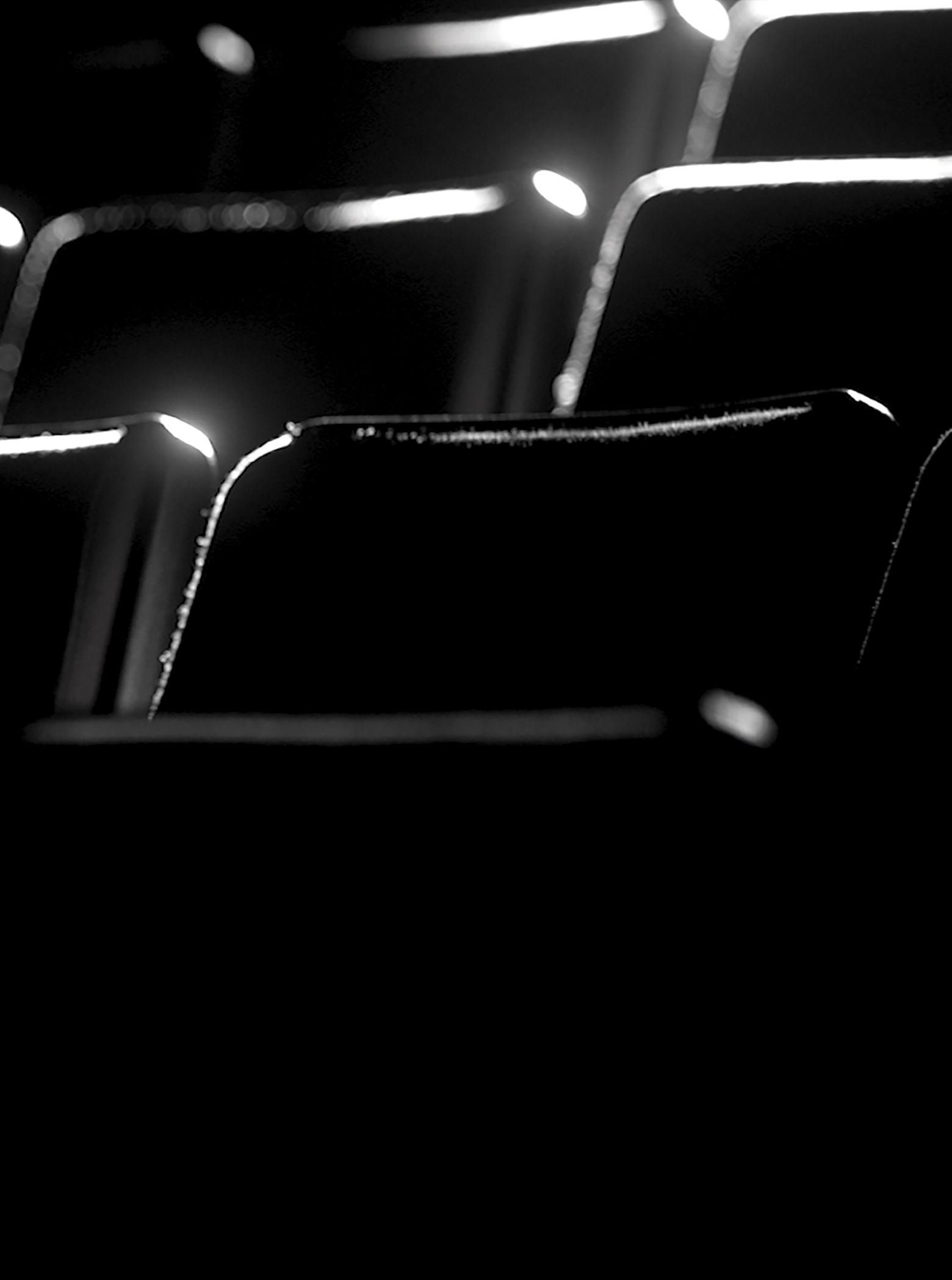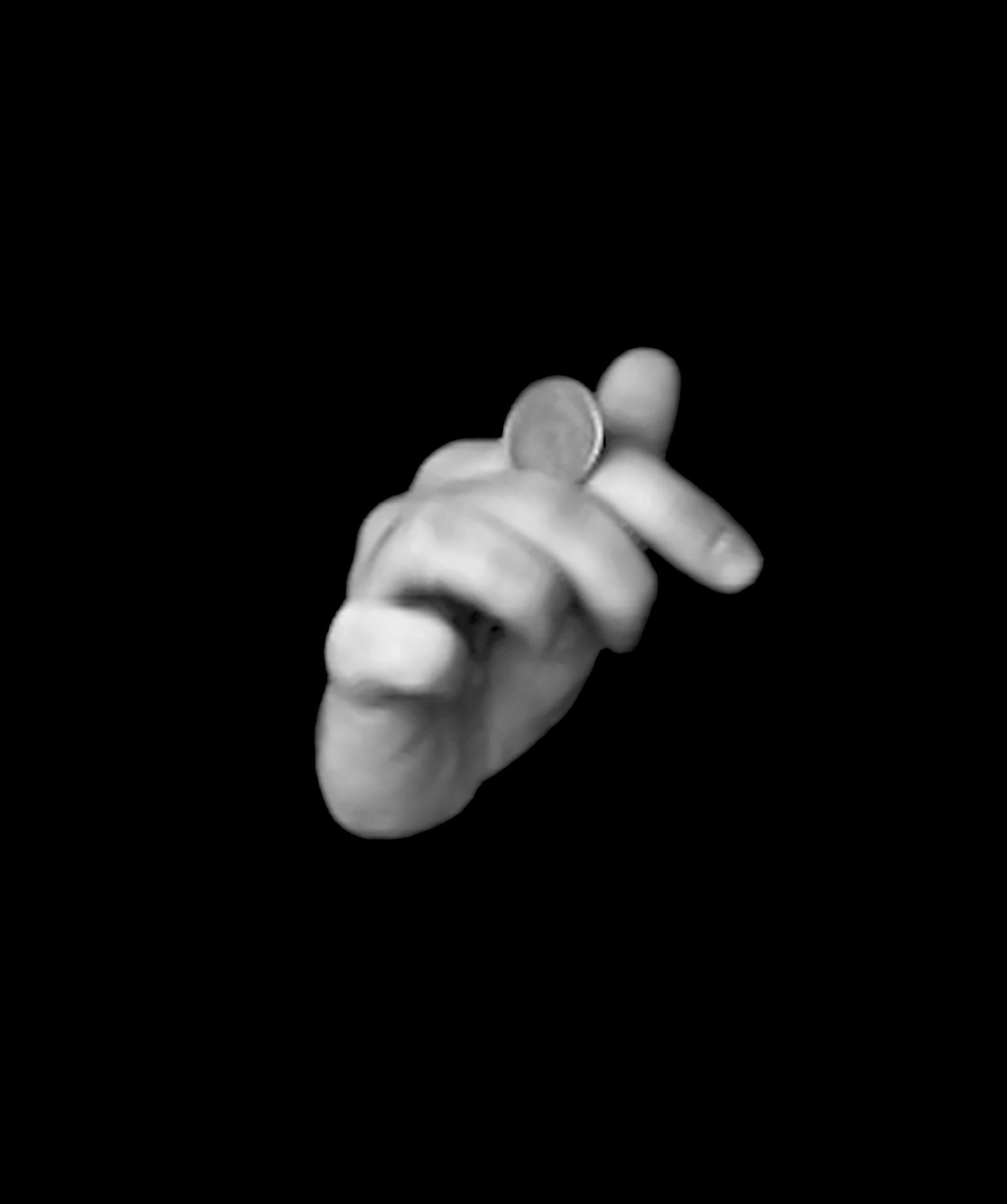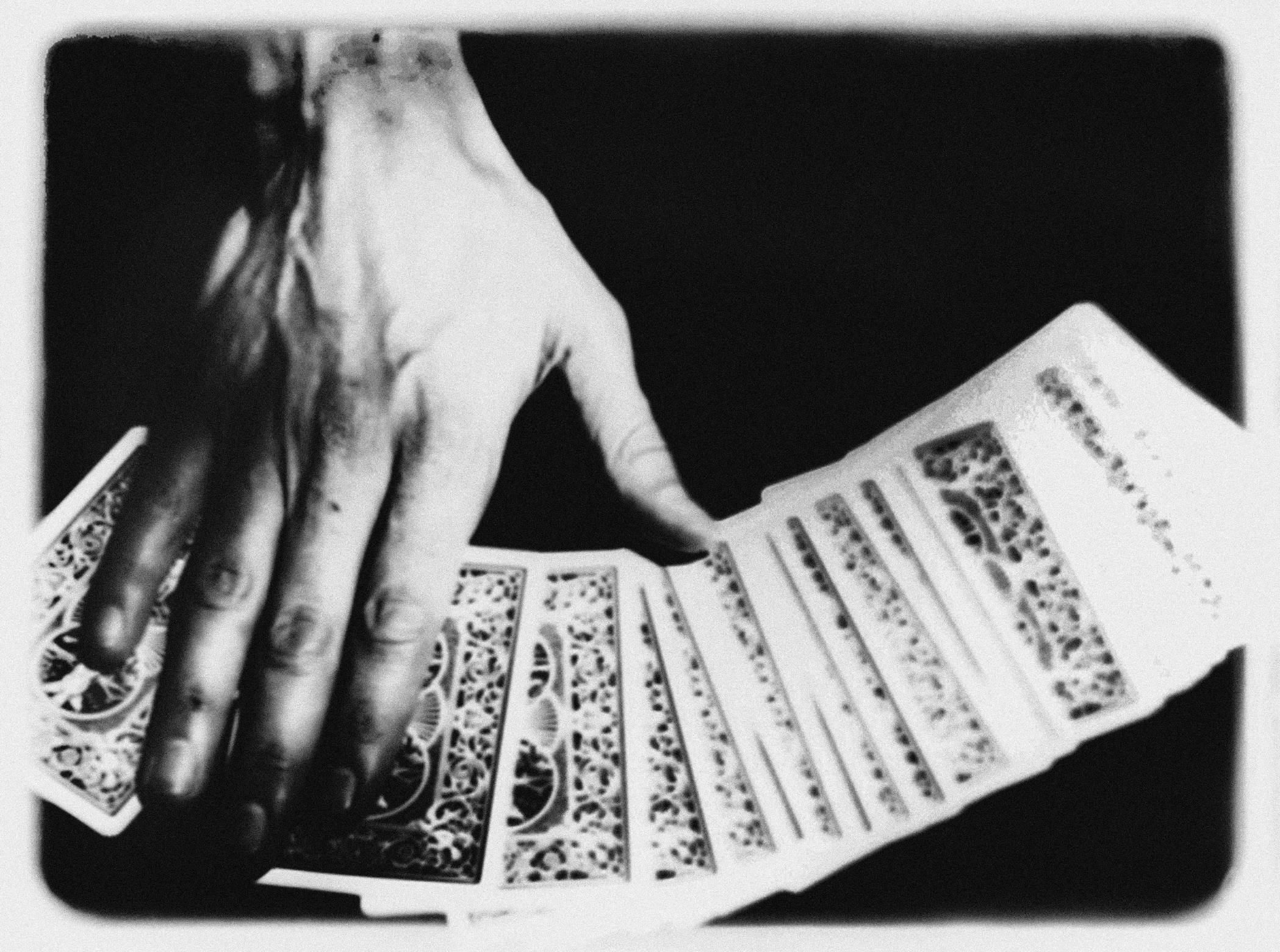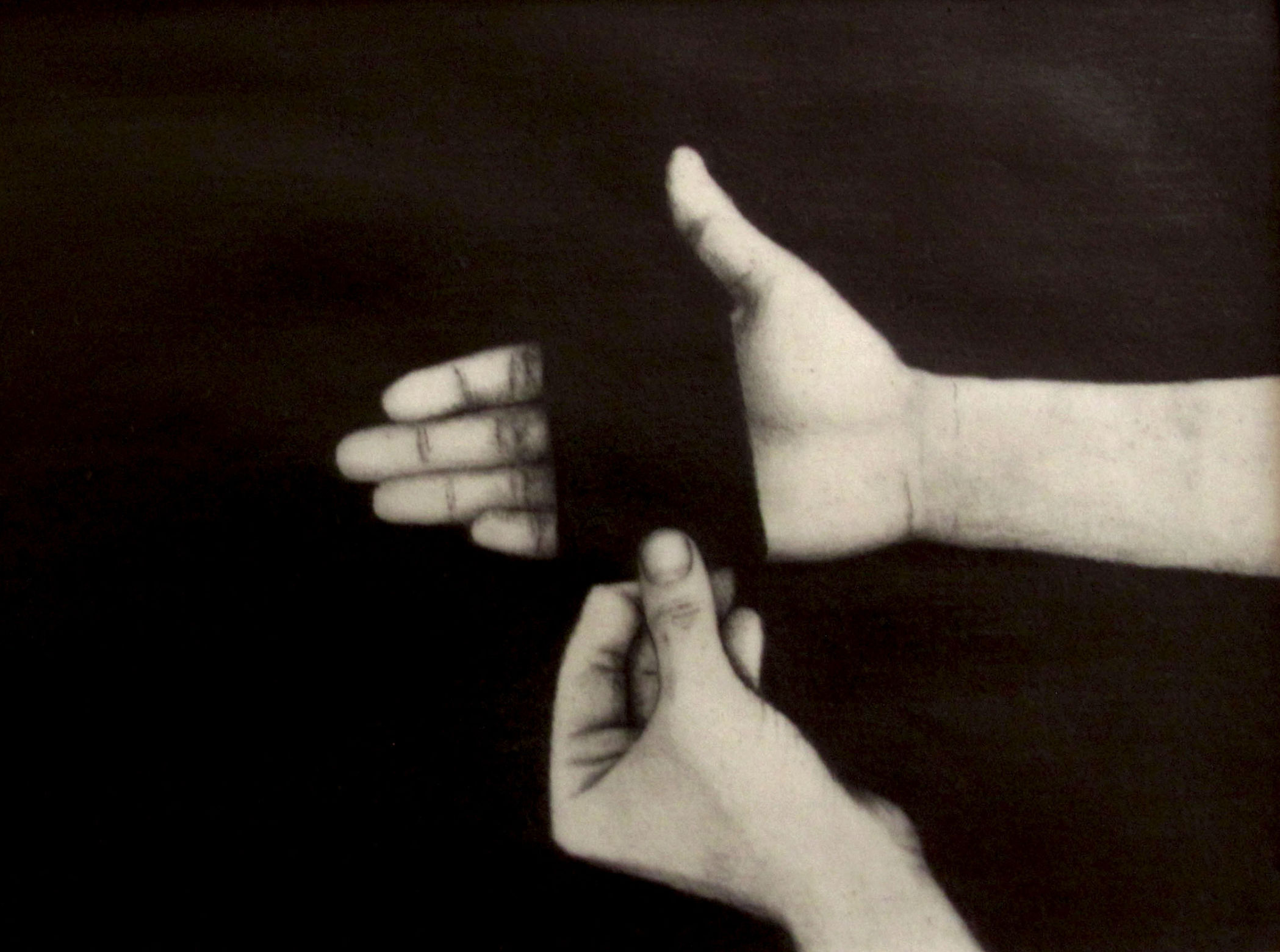Sala10: Fabiola Torres-Alzaga
virtual exhibition
Actos de ilusión
[Acts of Illusion]
I use film and the theatricality of scenic magic as the basis for a project that explores our form of perception and I produce pieces that unfold somewhere between their appearance and other visual possibilities. I am interested in work that is transformed in accordance with the point of view that we occupy in space as we circumnavigate the piece. And so I play with the thin line between the real and the optical, allowing the spectator to see both: the mechanics of the illusion and the illusion itself. In this process, I am interested in how deception, perception and perspective are elements that determine what is real.
Fabiola Torres-Alzaga

Choreography of Distances
To illuminate is to focus. And to frame is to delimit, argues Fabiola Torres-Alzaga in Acts of Illusion. The work analyzes the construction of the filmic image and how its representation is constituted: What happens when it represents? How does the gaze of the spectator operate? What processes and what times play out so that representation can happen? What is it we see and stop seeing?
This piece, specially produced for Sala10, explores the frameworks of filmic representation and how it appears in the construction of space and narration in movement. The video is structured as a theatrical piece: it begins with a prologue followed by two acts, created out of scenes that superimpose the appearance and disappearance of images. The spectator waits in darkness as curtains open, awaiting what is to come, attentive to the emergence of the hidden. The phantasmagorical succession of images is counterposed with the voice of the artist to create a dialogue of silences and presences. Torres-Alzaga subtly introduces us to a game of light and shadows, establishing a tension with the framing through a sequence of splits between appearing, disappearing, reappearing and failing to reappear.
As is known, film is a sequence of fragmented images, but our gaze reconstructs them to create the illusion of movement. Acts of Illusion alludes to this fragmentation and visual perception that allows for the construction of the narrative.

Film functions due to retinal persistence, in which the eye holds on to an image in the retina for several instants, allowing it to create the illusion of continuity. In this way, the gaze of the spectator captures and frames the image, illuminating it and participating in the act of appearing and disappearing, negotiating this unveiling. The filmic fiction is situated in this space of ambiguity, as is, therefore, the capacity to conceal the image. In Acts of Illusion, the rectangular black frame that the artist manipulates with her hands makes reference to this phenomenon: a veiled, negated image, hidden and visible at the same time.
The parallelism that Torres-Alzaga establishes between the illusion of film and magic allows her to reflect on forms of credibility of representation through which we agree beforehand to believe what we are going to see, in a prior act of trust. What is seen? What remains hidden, and why? And, above all, where is the deception? The artist presents to the spectator a prestidigitation, a sleight-of-hand that conceals and reveals surfaces and objects. Like choreography, fingers dance somewhere between relaxation and tension, emphasizing the optical, rational premise regarding that which is not seen, disappears. The fascination of magic: first with a coin, then with a pack of cards.

On the other hand, bodies appear as fleeting glimpses, providing presence to acts of shadow. According to Rancière, film “is an art of shadows, that is, an art in which one is faced with bodies that, in one sense, resemble bodies more than those one sees every day, and are more distant at the same time, bodies that are shadows, bodies that do not address the spectators in the way in which, in the end, they do in the theater.”[1] Acts of Illusion is a game of distances: between separations and approaches, illusion allows the invisible, representation, to flourish. Like specters, images arise and become visible in intervals and planes that constitute a narration. Like fireflies at night, their flickering frames and illuminates
[1] Armando Casas and Leticia Flores Farán (eds.), Jacques Rancière. En los bordes del cine. Entrevista con Jacques Rancière concedida al proyecto de investigación Cine y filosofía. Poéticas de la condición humana, Mexico, UNAM, 2014, p. 51.

Acts of Shadow
Text by Mara Fortes Acosta and conversation between Fabiola Torres-Alzaga and Virginia Roy
Light, in itself, as electromagnetic radiation, is invisible. It can only be seen through a medium, dispersed by the atmosphere, objects or the visual organ. In a movie theater, the source of energy remains hidden; the ray of light that crosses the space is a secret that is kept through inattention. Only the light that is spread over the screen is worthy of the eye. [...]
COMPLETE TEXT AND CONVERSATION HERE

Fabiola Torres-Alzaga
(Mexico City, 1978; lives and works in Mexico City)
In media such as video, film, installation, sculpture, photography and drawing, Torres-Alzaga's work deploys different possibilities of the visual by exploring its hierarchies and the nebulous geography between what is seen and what is hidden. Her work has been shows at the Bienal FEMSA (Zacatecas, 2018), the Anthology Film Archives (New York, 2018), Lille3000 (France, 2019), the Bienal de la Imagen en Movimiento (Buenos Aires, 2018), the Paul Kasmin Gallery (New York, 2018), Maison des Arts de Malakoff (France, 2016), the Polytechnic Museum of Moscow (Russia, 2015), MARCO (Monterrey, 2015), Museo del Chopo (Mexico City, 2014), Museo de Arte Moderno (Mexico City, 2014), Laboratorio Arte Alameda (Mexico City, 2011), the Center for Contemporary Art (Tel Aviv, 2006) and Sala de Arte Público Siqueiros (Mexico City, 2004), among others. She has published Historias de la noche (ESPAC, 2019), a book/project in dialogue with Mara Fortes, and Fabiola Torres-Alzaga: entre actos (Museo Universitario del Chopo, 2015), with texts by Itala Schmelz and Daniel Garza Usabiaga. She is currently a member of the Fonca’s Sistema Nacional de Creadores.
Fabiola Torres-Alzaga, Actos de ilusión [Acts of Illusion], 2020
HD video
9’
English voiceover: Virginia Colwell
Magician in the first act: Joaquin Kotkin, “The Half-Bearded Magician”

Curator: Virginia Roy
Curatorial coordination: Ana Sampietro and Jaime González
Communication: Ekaterina Álvarez
Media outreach: Ana Cristina Sol
Content editing: Vanessa López
English translation: Julianna Neuhouser
Graphic design: Andrea Bernal
Press management: Francisco Domínguez, Eduardo Lomas


